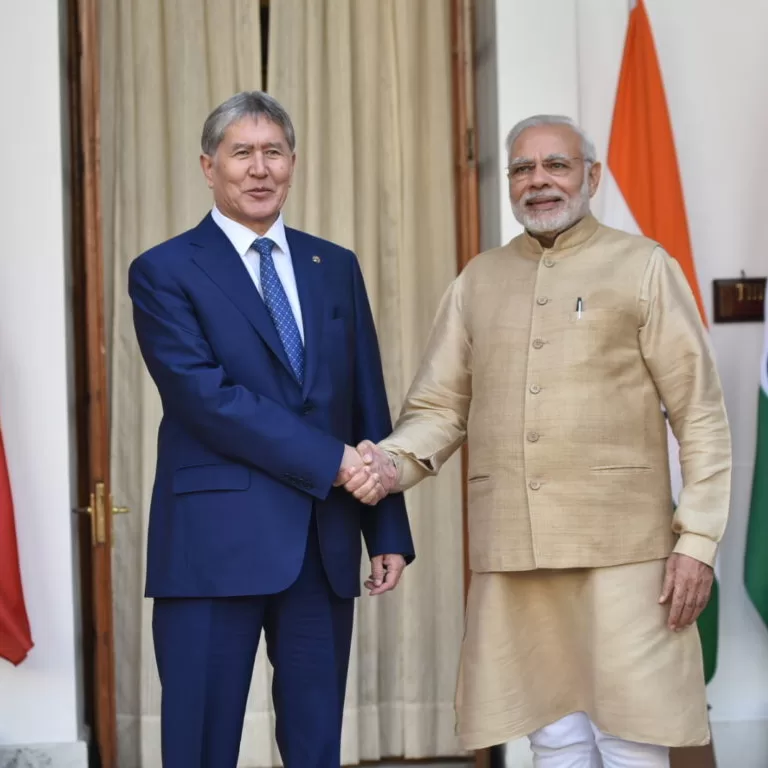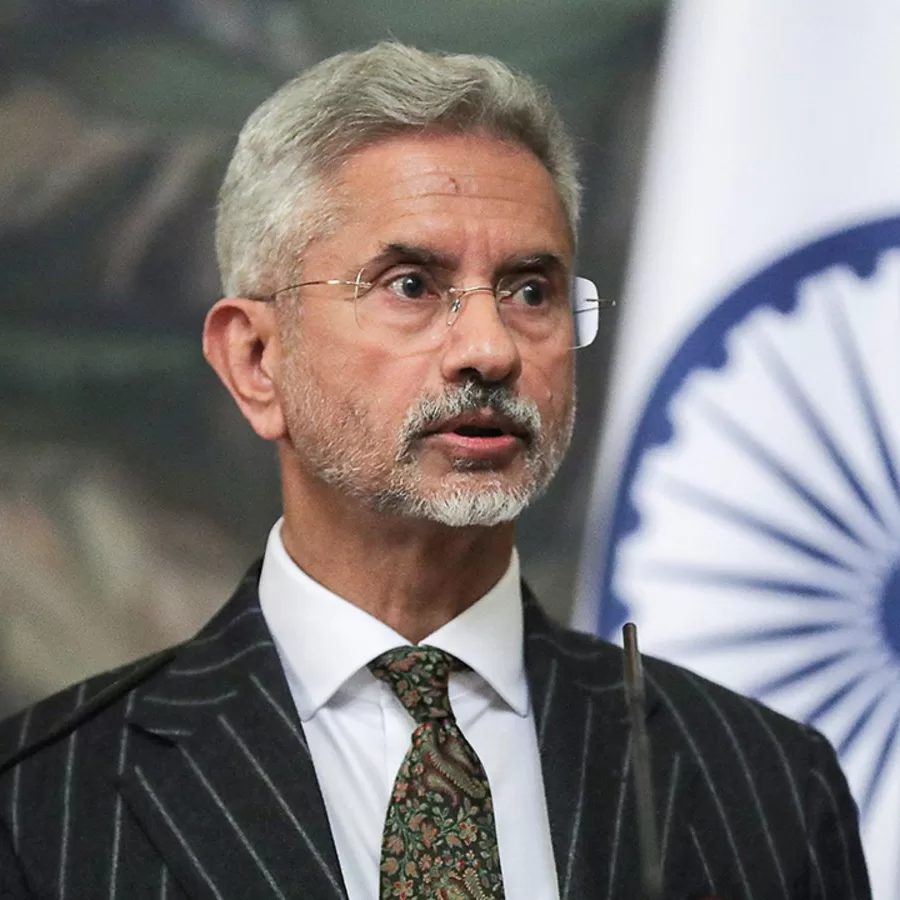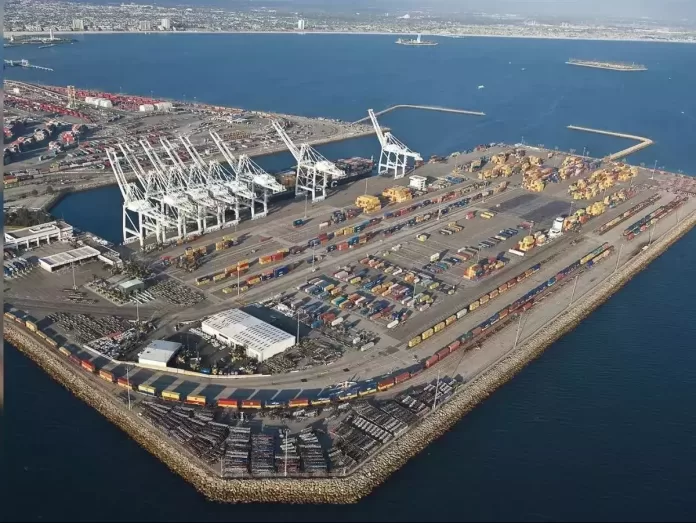Context
On May 13, India signed a 10-year agreement to develop and operate Iran’s strategic Chahbahar Port, committing $120 million, along with an additional $250 million loan credit facility for related projects. This landmark deal between Iran and India has unsettled the US and threatened China and Pakistan by India’s full-scale presence next to the Gwadar port.
Defying Western warnings, Indian Foreign Minister S. Jaishankar defended the agreement. He asserted that the broader significance of Chabahar Port, and the advantages of an Indian presence there would likely garner a positive response from the US. The US did provide a narrow exemption to the Indian development of the port in 2019 citing the humanitarian needs of Afghanistan and allowing it to diversify opportunities for its exports. On the contrary, responding to the latest deal on May 14, the US State Department Deputy Spokesperson Vedant Patel stated the US sanctions on Iran were still in place and would be enforced. “Any entity, anyone considering business deals with Iran – they need to be aware that they are opening themselves up to the potential risk of sanctions,” he stated. The warning is similar to what Pakistan receives whenever it expresses a desire to move forward with the long dormant Iran-Pakistan Pipeline project.
India’s long-term acquisition of Chabahar comes after securing a naval base at the strategic port of Duqm in Oman, situated in the Western Indian Ocean. The strategic location of Chahbahar port in the Gulf of Oman, with access to the Arabian Sea, offers several significant advantages to India.

Analysis
Connectivity to Central Asia
Firstly, it supports India’s ‘Connect Central Asia’ policy, fulfilling the long-held aspiration of establishing regional connectivity and trade corridors with the landlocked Central Asian countries. These nations possess rich untapped natural resources that are commercially valuable to India for its energy demands and essential for maintaining its economic momentum. However, India’s ability to fully capitalize on opportunities in Central Asia have been hampered by security sensitivities of its archrival Pakistan. The country has prevented easy Indian reach into Central Asia, through land route via Pakistan and Afghanistan.
Chahbahar mitigates India’s geographic vulnerability and provides India with direct access to Afghanistan and Central Asian countries, thereby activating the inactive International North-South Transport Corridor (INSTC). INSTC is a 7,200 kmlong multimodal connectivity project linking India to Europe through the Caucasus, Iran, Russia, and Central Asia. Incorporating Chahbahar into the INSTC will reduce transit time between India and Europe by 40% and transit costs by 30%.
The approximately $2 billion worth of trade between India, Central Asia and Afghanistan has remained stagnant due to its reliance on Chinese and Pakistani routes for market access. In contrast, China’s trade turnover with Central Asian states, including Kazakhstan, Uzbekistan, Kyrgyzstan, Turkmenistan, and Tajikistan, reached $89.4 billion in 2023, marking a 27% year-on-year increase. Additionally, China’s trade with Afghanistan amounted to $1.33 billion last year. The Chahbahar port offers India an opportunity to reestablish its presence in Afghanistan, which has traditionally relied heavily on Pakistan for access to the Indian Ocean. With Pakistan-Afghanistan relations at a low point, India is capitalizing by offering an alternative sea route through Chahbahar.
Unlike the unfavorable trade regime and tariffs imposed by Pakistan, Iran has extended a free trade zone at Chahbahar port to the Taliban regime. These incentives prompted the Afghan Taliban to contemplate a $35 million investment in Chahbahar in late February, aligning Afghanistan with Iran and India while bypassing the China-Pakistan Economic Corridor (CPEC).
Militarization of Chahbahar Port
Secondly, while India may use the Chahbahar port primarily for commercial purposes, it also enhances India’s strategic autonomy by allowing for the potential establishment of a naval base to counterbalance Chinese military presence. At present, state-owned Chinese firms oversee operations at seven ports in South Asia and seventeen ports across the Indian Ocean region. The Indian Ocean is crucial for India, as about 80% of its crude oil and 95% of its trade (by volume) pass through it. India’s maritime fleet currently comprises only 132 warships and aims to expand it to 175 by 2035. On the other hand, China’s fleet consists of 370 warships, projected to increase to 435 by 2030. Furthermore, the Chinese new type 096 nuclear-armed submarines, known for their exceptional stealth, present a significant challenge not only to India but also to the United States and its allies. India’s ambition to match Chinese military capabilities in the Indian Ocean underscores the strategic significance of Chahbahar, located just 76 nautical miles from the Chinese-controlled Gwadar port, which is part of the China-Pakistan Economic Corridor.
This proximity allows India to closely monitor China’s naval activities and assess its capabilities. India views the expansion of Gwadar port as a direct threat to its naval security in the Arabian Sea and to its energy imports through the Gulf of Oman. Given Pakistan’s strong alliance with China, especially concerning their shared foreign policy objectives towards India, tensions in the Arabian Sea could potentially escalate into a conflict. In such an eventuality, India’s presence in Chahbahar positions it to potentially disrupt Chinese imports passing through the Strait of Hormuz. Iran and India have initiated discussions on enhancing military cooperation across various domains. In April of this year, Iranian Defense Minister Brig. Gen. Mohammad Reza and Indian Defense Secretary Giridhar Aramane met in Kazakhstan and agreed to strengthen military ties. This will include naval operations, joint exercises, defense research collaborations, educational exchanges, and student programs. Such a robust military partnership provides India with leverage over Iran’s military, which can benefit the US and its allies.
Balochistan and Chahbahar Port
Thirdly, the geographical proximity of the Chahbahar and Gwadar sea port to the volatile Balochistan region, inflicted with separatist militancy and terrorism, creates a different dynamic for India compared to Pakistan. Many Pakistan-wanted Baloch militants reside in Iran’s Sistan and Baluchestan Province near the Chahbahar port. Pakistan fears that India, which is already accused of supporting Baloch insurgency, could use its presence in Chahbahar to bolster anti-state activities against Pakistan. The disruptions caused by Baloch insurgency have hindered the CPEC from realizing its full potential and is undermining the Gwadar port works benefiting Chahbahar Port.

Modi’s Foreign Policy and Chahbahar Port
Under Prime Minister Modi’s leadership, India follows a foreign policy guided by “multi-alignment” and “strategic autonomy,” demonstrating its readiness to capitalize on opportunities that advance its national interests. Strengthening defense and economic prowess remains a top priority in India’s foreign policy agenda. Towards this goal, collaboration with the United States is seen as a pathway to acquiring advanced technology and bolstering the defense industry. Simultaneously, India’s engagement with Iran is part of a broader regional strategy aimed at countering China’s Belt and Road Initiative, leveraging the Chahbahar port to enhance Indian naval presence in the Indian Ocean.
Modi’s administration is already making progress in its maritime defense strategy and forging partnerships with countries outside the US camp. On the one hand, India has been developing its own maritime defense strategy, called the ‘Necklace of Diamonds.’ The aim is to establish military bases in the Indian Ocean to encircle China and creating Indian-led alternative regional connectivity corridors countering the multi-billion-dollar Chinese Belt and Road Initiative. On the other hand, India has redefined its strategic focus, prioritizing ‘Neighborhood First’ under its ‘Think West’ foreign policy. The goal is to engage the Gulf countries to India’s west. In this context, India, taking exception to the US’s long-standing policy of sanctions against Iran, is actively seeking to establish cordial relations with Tehran.

In recent statements, External Affairs Minister Subrahmanyam Jaishankar emphasized India’s commitment to an independent stance that protects its interests and allows it to find its own solutions, rather than depending on the West or the US. Similar sentiments have been echoed by Defense Minister Rajnath Singh. He promised to modernize the Indian armed forces, especially the Navy, and increase indigenous defense production for self-reliance. India regards its naval strength as fundamental for fortifying strategic autonomy in the Indo-Pacific region. While acknowledging it cannot directly match or fully constrain China, India’s strategy aims to pose significant challenges and potentially delay China’s rise. In this context, Chahbahar assumes a pivotal role as a strategic outpost for India, facilitating close monitoring of China’s naval activities in the Arabian Sea and safeguarding India’s interests in the Indo-Pacific.
However, Indian opportunistic outlook is essentially flawed. While connectivity with India helps limit Iranian international isolation, Iran is also a key partner of both China and Russia. In March 2021, China and Iran entered a $400 billion 25 year economic and security deal that would lead to enhanced military and trade relations. The agreement ensures Chinese investment in Iranian telecommunication, transportation, and military fields. The China-Iran military cooperation includes exercises, intelligence sharing, and joint research and development of weapons. China will also procure its energy needs from Iran on discounted price for over next 25 years. It’s unrealistic to expect Iran will risk its strategic ties to China and Russia by allowing India to serve western interests through Chahbahar, especially when China, Russia, and Iran represent the anti-western grouping in the present global balance of power tussles. While India also maintains traditionally close ties with Russia, as US-China rivalry escalates, Indian duplicitous posture to benefit from all sides is unsustainable and risks regional isolation.





